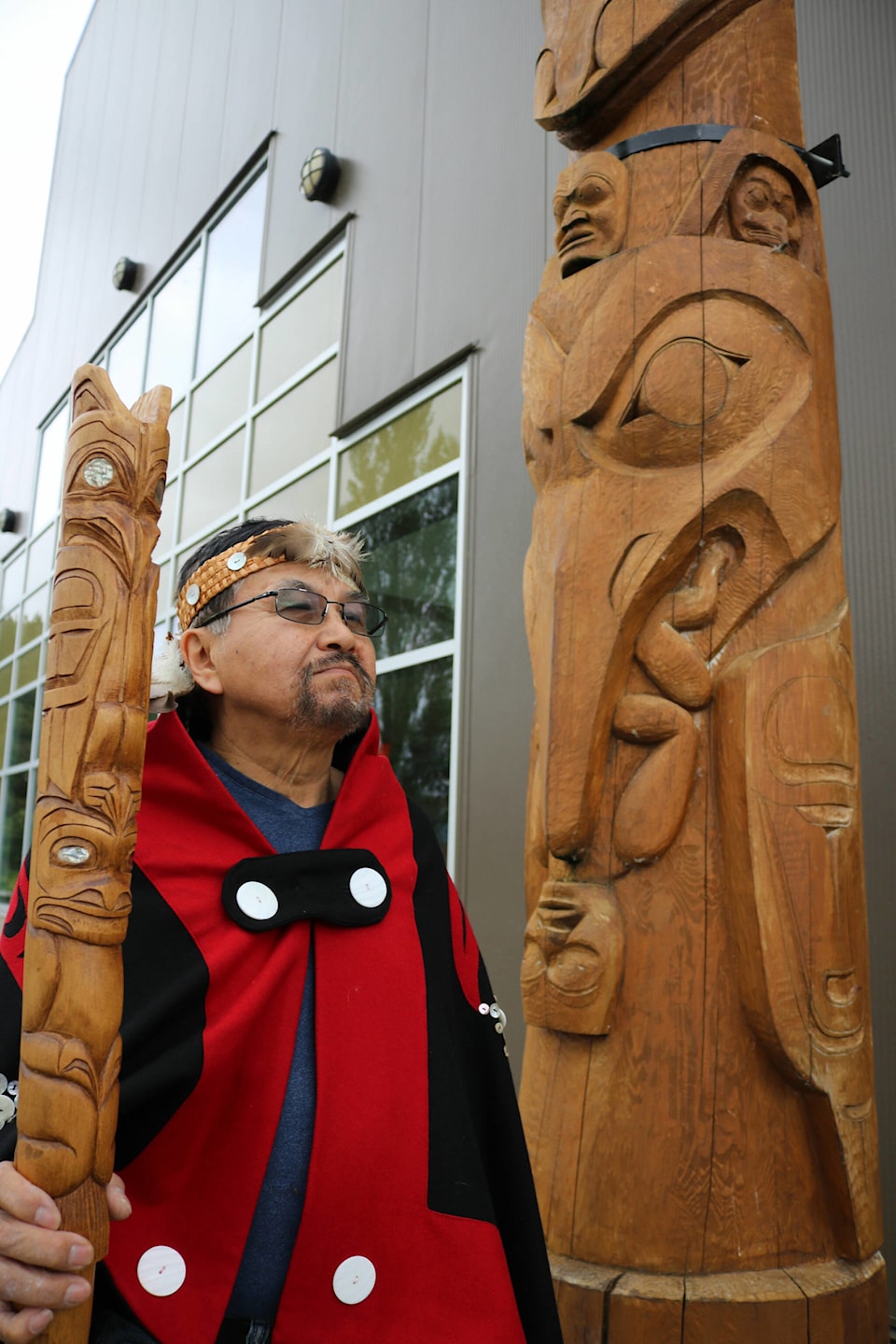A Nisga’a delegation is heading to Scotland to begin discussions about returning a memorial pole that was taken out of the Nass Valley in the late 1920s.
The delegation will meet with officials from the National Museum of Scotland where the Nisga’a memorial pole currently resides.
According to a statement released by the Nisga’a Lisims Government (NLG), the totem pole was taken in 1929 by ethnographer Marius Barbeau, who later sold it to the museum.
The Ni’isjoohl memorial pole was carved and erected in 1860s for the House of Ni’isjoohl – one of the 50 Nisga’a house groups.
The pole tells the story of Ts’wawit, a warrior who was next in line to be chief before he was killed in a conflict with a neighbouring nation.
The Nisga’a said the pole was acquired by Barbeau, during a period in which the “unethical and illegal collecting of Indigenous belongings by settles and anthropologists was common in Canada.”
The pole was taken without consent when House of Ni’isjoohl members were away from for the annual food harvesting season.
“The pole holds significant knowledge within its carvings, and can serve as a form of curriculum for the next generation to learn a Nisga’a way of life through oral history,” said the NLG in a statement.
The delegation, consisting of Sim’oogit Ni’isjoohl (chief Earl Stephens), Noxs Ts’aawit (Dr. Amy Parent) and Shawna McKay, will meet with officials from the National Museum of Scotland on Aug.22.
“This will be the first time in living memory that members of the House of Ni’isjoohl will be able to see the memorial pole with our own eyes,” said Sim’oogit Ni’isjoohl (Earl Stephens). “This visit will be deeply emotional for us all.”
The repatriation of the pole is also subject to Article 12 of the United Nations Declaration on the Rights of Indigenous Peoples, of which the United Kingdom is also a signatory, said Noxs Ts’aawit (Dr. Parent) who is the Canada Research Chair in Indigenous Education and Governance at the Simon Fraser University.
“The repatriation of the Ni’sjoohl house pole is one step the National Museum of Scotland can take towards reconciliation through concrete action,” she added.
The landmark Nisga’a agreement (1999) was also the first modern treaty to include major provisions for repatriation. As of Sept. 2010, more than 300 artefacts have been legally returned from the Canadian Museum of Civilization and the Royal BC Museum.
If successful, the Nisga’a memorial pole would be the second ever pole to be repatriated back to Canada from a European museum. The Haisla G’psgolox pole remains the first and only First Nations pole to have been repatriated to northwestern B.C. from the Sweden’s Museum of Ethnography in 2006, 79 years after it was taken.
When returned, the pole will become part of a larger research project to explore the philosophy and practices of the Nisga’a carving tradition, said the NLG.
In an email statement, the National Museums of Scotland said they are looking forward to hosting a delegation from the Nisga’a Nation to view the memorial pole, share information on it and share their procedure for considering requests for the transfer of objects.
“We welcome open dialogue and foster collaboration with communities for whom objects in the collection have special relevance,” the museum spokesperson said.
Editor’s note: The article has been updated to include a statement from the National Museums of Scotland
binny.paul@blackpress.ca
Like us on and follow us on



